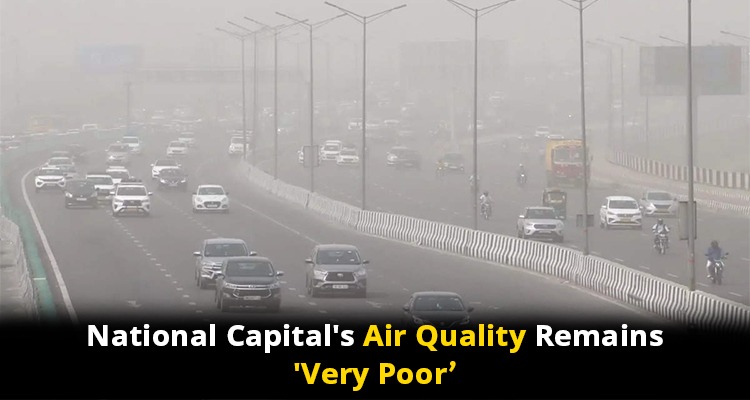
The national capital’s air quality on Friday remained in the ‘very poor’ category, with several areas registering an Air Quality Index (AQI) exceeding 350, as reported by the System of Air Quality and Weather Forecasting And Research (SAFAR-India). The overall AQI for the Capital was 388 at 7.55 am on Friday.
Although there was a slight improvement from the ‘severe’ category to ‘very poor’ in various areas, the air quality persisted as hazardous for residents. The Pusa area recorded an AQI of 403 at 7.55 am, while IIT Delhi reported an AQI of 579.
Additionally, the Lodhi Road area’s AQI was 359, and the Delhi University area and the Airport (Terminal-3) area recorded AQIs at 386 and 398, respectively. Data from the Central Pollution Control Board (CPCB) indicated an AQI of 411 in Anand Vihar, while Alipur, Wazirpur, and RK Puram recorded ‘severe’ AQIs at 432, 443, and 422, respectively.
The Air Quality Index categorizes values from 0 to 100 as ‘good,’ 100 to 200 as ‘moderate,’ 200 to 300 as ‘poor,’ 300 to 400 as ‘very poor,’ and 400 to 500 or above as ‘severe.’ The AQI serves as a tool to communicate air quality status clearly, transforming complex pollutant data into a single number, nomenclature, and color.
Following a significant improvement in the overall AQI last week, the Commission for Air Quality Management (CAQM) revoked restrictions under GRAP 4 on Saturday, allowing trucks and buses, except for BS-3 and BS-4 petrol and diesel vehicles, to enter the city and lifting the ban on ongoing construction activities.
Last Tuesday, during a hearing on a plea related to rising air pollution in Delhi-NCR, the Supreme Court suggested depriving farmers engaging in stubble burning of Minimum Support Price (MSP) benefits as an economic repercussion of their actions.




